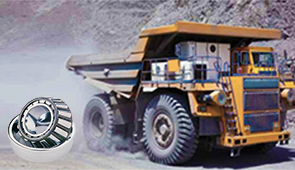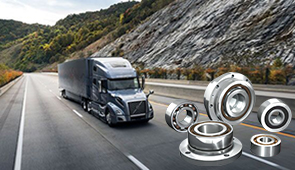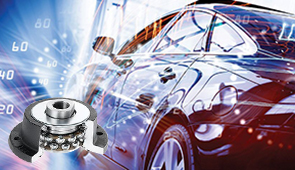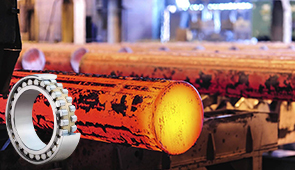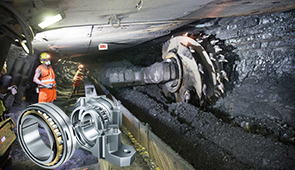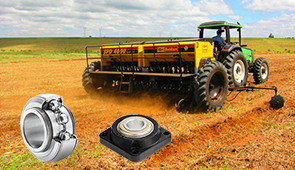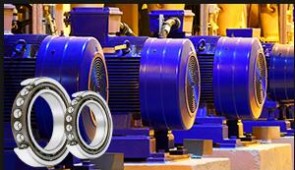Can a Bad Wheel Bearing Cause Brake Problems? Understanding the Impact on Your Vehicle
A vehicle’s wheel bearing is a critical component that sometimes does not get the much-needed attention until it fails. While its main role is to permit the wheels to rotate smoothly with little friction, a faulty wheel bearing can create a ripple effect on other aspects of your vehicle, including the braking system. But exactly how does this connection work? Can a bad wheel bearing really diminish your braking ability or make you unable to stop on time? In this article, we will define the relationship between the wheel-bearing and the brake’s performance while exposing the causes, form, warning signs, and the dangers of ignoring this crucial part. Having simple knowledge about the mechanics of your vehicle would, therefore, empower you to be proactive to ensure safety and reliability on the road.
Introduction to Wheel Bearings and Their Importance
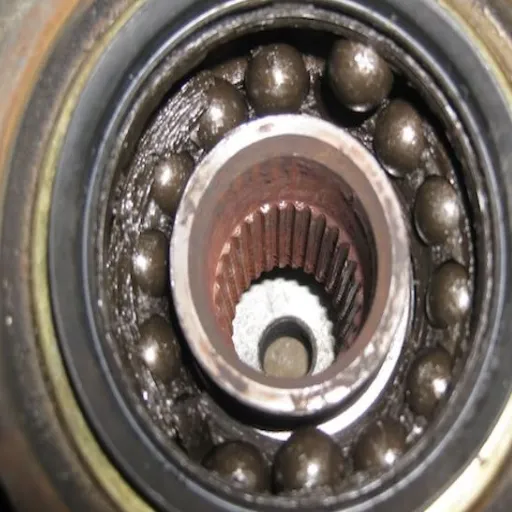
What is a Wheel Bearing?
A wheel bearing is an important piece of a vehicle’s wheel assembly that allows the smooth rotation of the wheel with almost no friction. The bearing comprises steel balls or rollers contained in a metallic ring called a race. The bearings are stamped within the wheel hub, which is where the wheel mounts onto the axle.
The main function of a wheel bearing is to sustain the vehicle’s weight while at the same time enabling free rotation with exact steering control and stability so that handling can be performed efficiently. In the absence of operational wheel bearings, the wheels cannot spin properly, causing infringement on driving ability and on safety.
Wheel bearings can withstand immense stress that comes from changes in speed, cornering, and road conditions. However, they do wear out with time-from constant use or the ingress of debris ,or from lack of lubrication. In keeping one step ahead of such failures, one must maintain and regularly inspect wheel bearings so as not to come across unreasonable mechanical problems or compromise braking and handling safety.
How Wheel Bearings Work
Working as the critical components of the wheel assembly, the wheel bearings enable smooth rotation of the wheel with minimal friction between the wheel and the axle. The bearing consists of metal balls or rollers encased in a hardened, lubricated ring called a race. The design enables the wheels to rotate freely while carrying the weight of the vehicle.
Wheel bearings provide their functions because they reduce resistance, subject to precision engineering and lubrication. Usually, high-quality steel is used in manufacturing them so that they can withstand very heavy load applications and extreme conditions. The lubrication inside the bearing reduces frictional heat, corrosion, and contamination of the metal parts.
Just to say, wheel bearings create a sturdy interconnection between the wheel and suspension when in good condition. Well-aligned tires ensure good handling of the vehicle. When bearing failure starts, symptoms such as noise, vibration, and tire wear can give indications that inspection and replacement may be necessary. Hence, good lubrication and timely maintenance are very important to ensure their long life and reliable performance.
The Role of Wheel Bearings in Vehicle Safety
Wheel bearings are vital components of vehicle safety, being needed to reduce friction among the moving parts of a wheel while bearing the load of the vehicle, and any failure within the wheel bearing system can highly compromise safety, resulting in an accident or grave mechanical issue. Therefore, through a proper knowledge of wheel bearings, one must maintain them in the best possible way. Here are five detailed roles fulfilled by wheel bearings in vehicle safety:
- Stable Wheel Revolution: The bearings allow the wheels to rotate smoothly with minimal resistance. This stability prevents excessive wear to tires and ensures that the vehicle is operating efficiently and contributing to precise handling and control.
- Load Bearing and Weight Distribution: Bearings are carrying all the weight of the vehicle, including that of passengers and other cargo, as well as any dynamic forces experienced during driving. They distribute this load evenly across the axle to provide balance and thereby prevent any structural damage from happening to the suspension system.
- Minimize Friction: By reducing friction between the axle and the wheel hub, wheel bearings help with the maintenance and service life of some important components of a vehicle. Movement with less friction reduces wear on associated parts such as the axle and suspension.
- Enhances Steering Performance: Good wheel bearings help in providing stable and precise wheel alignment and, therefore, precise steering. Wheel misalignment through bearing failure will diminish responsiveness and become a safety hazard, particularly during high-speed manoeuvres or emergency braking.
- Noise and Vibration Suppression: A good-quality wheel bearing suppresses vibrations and noise generated by the mutual operation between moving parts. Defects in the bearing motion, such as pitting or spalling, generate very loud grinding or humming noise; such noise indicates a serious safety threat that requires immediate attention.
These factors emphasize the paramount importance of wheel bearings in propagating both vehicle safety and mechanical reliability. Early detection of any issues through prompt inspections and following the manufacturer’s maintenance recommendations will help maintain this important component in good working condition.
Signs of a Bad Wheel Bearing
Recognizing Unusual Noises
Unusual noises from the wheels are among the most common and noticeable indicators of a failing wheel bearing. These noises are often said to be humming, growling, or grinding, and they will increase or decrease with the speed of the car and the severity of the damage. For example, a grinding sound will frequently warn of metal-to-metal contact, while bearing insufficient lubrication or advanced wear would need this situation to be inspected immediately and possibly changed to avoid further damage and ensure safety.
Sometimes the wheel-bearing noise can be confused with some other vehicle problem. The user must try and distinguish a defective wheel bearing by noticing changes in sound characteristics while driving. For example, the defective bearing usually gives off a consistent growling noise that becomes louder when the car turns because additional lateral forces are placed on the failing component. Pairing these observed patterns with other symptoms, such as vibrations or uneven tire wear, can help pinpoint the actual cause.
When the noise is unusual and lasts for an extended period, a proper diagnostic examination must be carried out. Chassis ears or possibly a mechanic’s stethoscope can be used to identify which wheel is causing a faulty bearing situation. A competent technician could also perform a visual inspection to determine any signs of excessive play or wear. Following the general maintenance practices and periodic checks set by the vehicle manufacturer plays a significant role in reducing the probability of wheel-bearing failure and keeping them working in top shape.
Symptoms of Wear and Tear
Wheel bearings are vital parts of the major vehicle drivetrain component and may experience considerable stress with time, hence they tend to wear out. A deteriorated wheel bearing roar, or any other kind of unique noise coming from the wheel area, is the prime symptom of such an issue. The noise can vary from the humming growl to the grinding noise that increases in intensity with the speed of the vehicle and alternates in pitch and volume while going around corners. This particular noise is generated when there is internal damage, such as pitting or scarring to the surface of the bearing, after prolonged use without sufficient lubrication or due to contamination.
Another major symptom attributed to the worn bearing is that the vibration from the wheels will sometimes increase through the steering or through the chair. With the deterioration of the bearing, the affected wheel wobbles and causes irregular handling and, ultimately, reduced vehicle stability. Another symptom for the driver will be irregular tire wear, in obvious terms related to the excess play of the wheel caused by the damaged bearing that can create a faulty alignment of the tire footprint on the road. Close visual observation of the wheel can assist in identifying loosening or abnormal tilting that further reinforces a potential problem.
More warning symptoms include illuminating warning lights on the dashboard, in particular, the ABS light. This happens because most modern cars include the wheel bearing assembly with the ABS sensor. When the bearing fails or the mounting gets weak, it can affect the correct function of the sensor, and hence, warnings will be issued by the system. Addressing such symptoms immediately is highly recommended since this advanced-bearing failure can threaten the safety of the operator severely by way of wheel lockup or the wheel coming off under operation.
Visual Signs of Damage
Early detection of wheel bearing failure is crucial in avoiding severe complications, and visual signs in diagnosing the matter are of utmost importance. One of the more definite clues is grease leakage near the wheel hub assembly. This leakage most commonly is caused when the seal inside the bearing becomes defective in some way and allows the grease within to ooze out. They then become sticky spots that attract grime and debris, building up in the area and further damaging the component. During maintenance, one must also check for abnormal patterns of grime build-up at the hub.
Another injury comes from uneven or abnormal tire wear. If the wheel bearing is worn or not properly fixed, the misalignment of the wheel assembly occurs, which imparts abnormal stresses onto the tire, causing irregular patterns of wear. Over time, the situation worsens, and the performance of the tire is compromised, thus raising a big safety concern. So, checking tire wear from time to time supports the early detection of wheel bearing failures.
Cracks, corrosion, or scoring on the wheel hub and the bearings also present signs of progressive damage. These generally develop due to being exposed for long periods to external contaminants, such as water, dust, or chemicals entering through the seals. Corrosion is, in particular, a fast way of forming wear, which will compromise the structural integrity of the material. The good thing to do is to regularly inspect the physical condition in conjunction with specialized diagnostic tools to secure operational safety and to avoid catastrophic failure.
How Bad Wheel Bearings Affect the Brake System
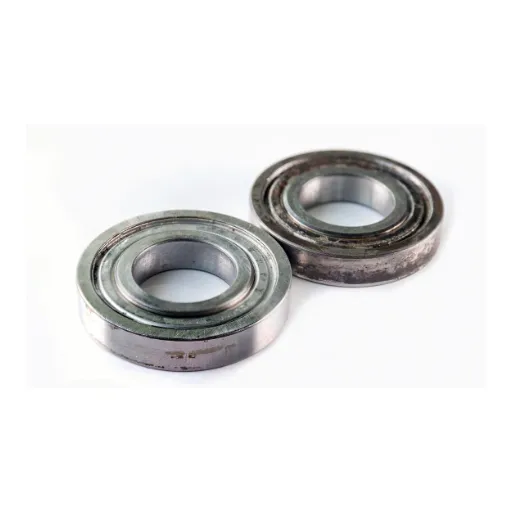
Understanding the Connection Between Wheel Bearings and Brakes
Wheel bearings hold a crucial position in supporting the rotational movement of the wheel assembly for the smooth operation of the vehicle and its operation. Their direct relation to the braking system is majorly structural and functional. For example, wheel bearings allow for the exact alignment of a rotor or drum, both important components in braking mechanisms. Once wheel bearing wear or damage occurs, this alignment may be lost, resulting in uneven braking or ineffective brake engagement.
Excessive friction between rotating components can be generated by a faulty wheel bearing, producing corrosive heat against brake pads or rotors. Gradually, it will reduce brake efficiency, increase stopping distance, and cause vibrations or grinding sounds while braking. On the other hand, performance vehicles with antilock braking systems and electronic stability control require correct wheel speeds from sensors embedded within the hub assembly close to the wheel bearings. Bearing failures will interfere with those sensors, lowering ABS and ESC effectiveness, raising safety hazards.
To avoid such circumstances, wheel bearings must be regularly maintained and lubricated and should be changed immediately whenever signs of wear or failure are noticed. These activities will not only enhance the braking process but also ensure the operational safety of the entire vehicle over the long term.
Potential Brake Problems Caused by Damaged Wheel Bearings
Damaged wheel bearings cause many and varied braking problems due to their being responsible for holding the wheel in proper alignment and for proper wheel functioning. One of the more common problems in this respect is uneven or excessive rotor wear, caused by wobbling or misaligned wheels. This unevenness stresses the braking components, causing their premature wear. Furthermore, these compromised wheel bearings also contribute to increased vibrations from the brake pedal, as the lack of stability coming from the bearings directly affects the even application of braking force.
Another important issue lies in the potential diminution of braking efficiency. The damaged bearings create added friction and heat, which consequently may induce brake fade, a scenario where the braking force is lost due to excessive heat production while braking. This situation, in turn, enlarges the stopping distances and brings down the safety level of the vehicle in an emergency.
Often, wheel bearing failures are accompanied by abnormal noises—a grinding or humming noise—that drown out any other important vehicle or environmental sounds pertinent for the driver. With time and without intervention, such issues grow and become majorly problematic, leading to fully catastrophic failures of brake systems.
Going by these statistics, wheel bearings that are degraded may increase stopping distances to a tune of as much as 20 percent, especially at high speeds. While this conversely underscores the value of early detection using various diagnostic tools and routine inspections, application of an advanced condition-monitoring system could assist in detecting bearing wear before it develops to a state that could cause critical brake failures, thus ensuring optimal performance and safety of the vehicle.
The Risk of Loss of Control
Amongst the several factors considered in the causation of loss of vehicular control, mechanical malfunction and driver’s error have always been deemed paramount. And among all the possibilities, brake system failures are the most influential. A tortured or delayed response by the braking system arrives from a fatigued and worn-down set of components, which may include bearings, rotors, or hydraulic lines. The delay stemming from such malfunctioning would only increase the probability of accidents, especially when the vehicle itself grapples with maintaining stability and traction at high speeds or in inclement weather. The use of advanced condition-monitoring systems may lessen these risks by informing whether component wear has occurred or by alerting against anomalous behaviors well before such behaviors translate into catastrophic failure.
Statistically, the standing evidence is clear that deficiencies in braking systems are inextricably linked with the loss of vehicular control. As per traffic safety studies, nearly one-quarter of accidents caused by mechanical failure exhibit direct involvement of braking systems. Post mortem of reports done on accidents revealed that vehicles faced loss of stability during emergency maneuvering, much more so with cases experiencing protracted stopping distances or with braking patterns that were irregular. This brings forth the necessity of looking into predictive maintenance that can reduce brake-related incidents by 40% of their occurrence cases.
Further, from the perspective of advanced brake system technology, integration of electronic brake systems (EBS) and adaptive traction control improves the old systems for better control and safety. These function almost in concert, ever-monitoring wheel speeds and load distributions as well as the nuances of road surface conditions so that braking can be adjusted on a real-time basis. The second level could include the use of machine-learning algorithms for data analysis, so the system could be enhanced with methods for forecasting upcoming failures and implementing corrective actions that dynamically recalibrate operations to minimize risks. The adoption of these technologies will greatly reduce the probability of control loss incidents caused by brake inefficiency and thus lead to a safer driving experience.
Diagnosing Brake Issues Related to Wheel Bearings
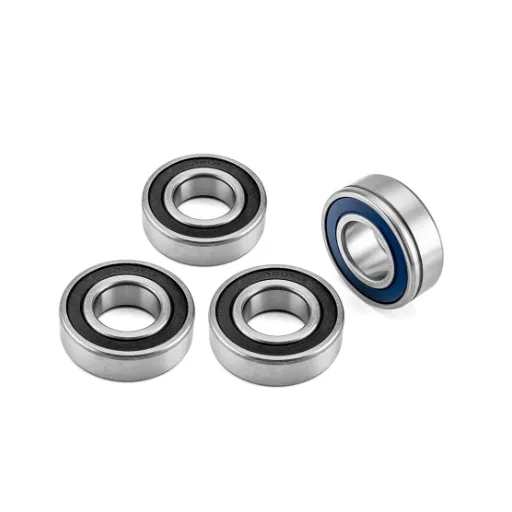
How to Inspect Wheel Bearings
Inspection of wheel bearings is paramount in ensuring the braking system operates optimally and, most importantly, guarantees safety. Beginning with the inspection, check the wheel hub and surrounding components for any signs of grease leakage, as this could indicate issues with the seal or a failed bearing. When turning the wheel by hand, listen for any obnoxious noises such as grinding or humming. A smooth, clean ride is almost certain to indicate a severely worn-out bearing or internal damage.
Next, check the play of the wheel bearing. This is done by handling the procedure in a characteristic way wherein the vehicle is raised and supported on a suitable jack or lift. A gripping force is applied to the tire at the two positions of 12 and 6 o’clock, and a rocking motion is attempted. Sidereally, if there is some evidence of movement or looseness felt during this process, there may be bearing wear or misalignment. Measuring endplay with a dial indicator is another process to confirm that the near-exact value is within the manufacturer’s recommended specifications.
A more detailed inspection involves removing the wheel and brake assembly to inspect the bearing directly. Examine the bearing for any pitting, discoloration, or uneven wear patterns that might indicate inadequate lubrication or contamination. And finally, if one has the tools for vibration analysis, one can use them to detect the signatures of abnormal vibration frequencies from early-stage bearing failures. This will pair them well with good mechanical inspections to tease out issues with great certainty and provide good strategies for redress.
Professional Diagnosis vs. DIY Checks
Professional diagnosis requires expert tools and sophisticated skills, while in DIY checks, what matters the most is visual inspection and basic troubleshooting based on the individual’s own skills.
|
Key Point |
Professional Diagnosis |
DIY Checks |
|---|---|---|
|
Tools |
Specialized equipment |
Basic tools |
|
Expertise |
Certified mechanics |
Self-taught skills |
|
Accuracy |
High |
Moderate |
|
Cost |
Expensive |
Low |
|
Time |
Quick |
Time-consuming |
|
Safety |
Ensured |
Risky |
|
Scope |
Comprehensive |
Limited |
|
Convenience |
Hassle-free |
Effort-intensive |
|
Reliability |
Guaranteed |
Uncertain |
|
Outcome |
Long-term fix |
Temporary solution |
When to Seek Help from a Mechanic
When the issue with my vehicle is just beyond my technical know-how or when it needs any specialized tooling I do not have at my disposal, I like to seek help from someone who understands these things, one such person being a technician. Issues of a mechanical nature, for instance, engine malfunctions, transmission problems, or the intricacies of electrical diagnostics, are beyond home mechanics or amateurs and should, therefore, be dealt with by experts. The trained-to-the-ups-and-downs mechanic, having blood and sweat on his hands, would pinpoint the problem and come up with the appropriate solution without causing secondary problems.
Another significant aspect is safety. If the repair were risky enough to involve potential dangers like handling high-voltage components within an electric car or brake failure, then I find it safe and practical to leave repair work in the hands of a professional. They are appropriately trained, fully equipped, and highly competent in reducing the chances of making errors or suffering accidents while attempting repairs. In addition, professional centers sometimes guarantee their work through a warranty. Hence, ensuring what has been done will stand the test of time.
I enjoy the DIY and cost-effective side of it for small problems, but I cherish the care of an expert when it matters for precision and long-term fixes. Trusting a mechanic in such cases not only saves you time and effort but also remarkably keeps your vehicle at its best in terms of performance. With their full perspective and knowledge as well as sophisticated diagnostic aids, they are perhaps indispensable when serious automotive concerns present themselves to you.
Preventing Brake Problems Associated with Wheel Bearings
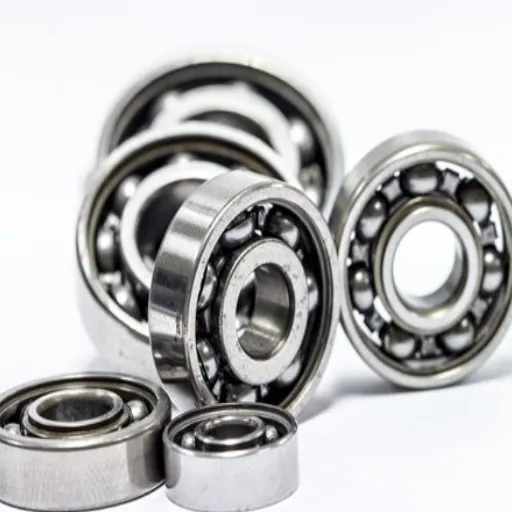
Regular Maintenance Tips
- Routine Inspections: Carry out periodic visual checks on your wheel bearings to spot the early signs of wear or damage. Because leaks, cracks, or any visible deterioration in the surrounding components could affect the bearings, always observe the seals and hubs moving around.
- Lubrication: Certainly, lubricate wheel bearings well so that heat buildup from friction and unnecessary wear can be avoided. Use the grease products recommended by the manufacturer, making sure the bearings are fully packed.
- Avoid Overloading: Frequent loading beyond the weight limits stated in the vehicle’s manual exerts huge pressure on wheel bearings and speeds up the wear process. Thus, always uphold the stipulated load capacity for your vehicle.
- Monitor Brake Performance: Since wheel bearings affect braking performance, any grinding sounds or unusual vibrations felt while braking could mean there is an issue in the bearings. Attend to this immediately with the help of a mechanic.
- Maintain Proper Wheel Alignment: In the misalignment of wheels lies the uneven stress application on the bearings and the extra pressure of wear to be endured. Through this, a regular check for the wheel alignment would be helpful in keeping the even load distribution promoted, thereby lengthening the bearing life.
- Use Quality Replacement Parts: When replacing your wheel bearings, use only quality parts that are certified OEM. These will be compatible and will also have a worthwhile service life. Inferior parts may fail prematurely, thus endangering the safety of the vehicle.
These preventative measures, along with professional periodic inspections, greatly reduce the chances of brake problems associated with wheel bearing troubles, providing you with a reliable vehicle and safe journey.
Signs to Watch for During Routine Checks
Routine inspections are critical to pinpointing the signs that provide a very early warning for a wheel bearing or brake system issue. Monitor the following key indicators during routine maintenance:
- Unusual Noises: Grinding, humming, rumbling. These noises coming from the wheel area might well be a warning sign of a failing wheel bearing or an associated component. Usually, they grow louder when the car accelerates, corners, or moves at high speed.
- Excessive Wheel Play: If, during a thorough inspection, some looseness or excessive movement is detected when manipulating the wheel, it is often a sign that the bearings are worn out and need immediate attention.
- Uneven Tire Wear: Irregular tread pattern and uneven tire wear display improper angle setup because of compromised bearings or suspension components.
- ABS Warning Light: Faulty wheel-bearing sensors might cause triggering of the ABS warning light, which might indicate a malfunction within the integrated system that monitors wheel speed.
- Handling/Performance Issues: Advanced bearing wear or alignment problems may be hinted at if the vehicle tends to pull to a side, handles poorly with reduced steering response, and wobbles when in motion.
- Leakage or Contamination: Check the wheel hubs for leakage of grease or contamination from debris. A damaged seal allows dirt and moisture to infiltrate, speeding the bearing deterioration.
Addressing these signs during routine checks will reduce the chance of endorsing catastrophic and extremely costly failures down the line. During inspections, use precise diagnostic tools such as dial indicators and infrared thermometers to measure the function and heat output of the bearings accurately, which in turn will provide data-driven support during decision-making on whether to maintain or replace them.
Importance of Timely Repairs
A timely repair is considered an important maintenance activity, machinery and operational reliability. Any delays in fixing a known problem might cause a much bigger failure to cascade within a mechanical system, thereby increasing unplanned downtime and the associated costs. Bearing defects, particularly when allowed to remain untreated, tend to cause secondary damage to the shaft and housing, or even the adjoining components, through increased friction and heat generation, thereby multiplying the scale and costs of repair.
Industry studies suggest that ignoring early warning signs of equipment wear can justifiably raise the repair costs by as much as three to five times compared with when these signs are addressed early on. Conversely, machines that are operational with compromised components usually tend to show reduced efficiency, high energy consumption, and a high risk of catastrophic failure. Addressing these defects as early as possible extends the service life of the machinery and also enhances operational safety standards, thus reducing the risks involved on the worksite.
Efficient meantime-to-failure predictive maintenance strategies must be implemented to ensure that any downtime experienced by the equipment is scheduled rather than unscheduled or unexpected. Hence, the decision-making process would be much enhanced when it is based on data, which in turn leads to much better resource allocation, finally yielding long-term reliability and cost effectiveness. Ensuring timely repairs is considered one of the fundamental principles of asset management rather than an optional practice.
Frequently Asked Questions (FAQ)
Q: Can a bad wheel bearing cause brake problems?
A: Yes- a failing bearing can indeed be detrimental to brakes! When the bearing is worn out, slight misalignments occur that adversely affect the brake pads and rotors. Thus, braking efficiency is compromised and potentially instigates hazardous driving conditions.
Q: How do worn bearings affect braking?
A: Worn bearings can cause the wheel to wobble or spin unevenly, adversely affecting braking. Such a misalignment causes uneven wear on brake pads and rotors; therefore, a worse form of perfect brake failure could emerge, or you could lose control of the vehicle while driving.
Q: What symptoms indicate your bearing is bad?
A: Some common signs of a bad bearing include a rhythmic squealing or grinding noise coming from the wheel, especially while turning or going at low speed. You could also notice the vehicle pulling to one side or vibrations in the steering wheel and excess play when trying to wiggle the wheel while it is off the ground.
Q: Can a bad bearing cause, or even contribute to, brake drag?
A: Yes bad bearing can cause the brakes to drag. If the failure happens in the wheel bearing, the brake caliper may not properly release, causing the pads to rub against the rotor constantly, leading to overheating and premature wear.
Q: How does a bad wheel bearing affect the steering wheel?
A: A bad wheel bearing affects the steering wheel, giving instability; in times of being worn, the wheel bearing could also cause the wheel to wobble, which can be felt as loose or unresponsive steering and hence difficulty in controlling the vehicle.
Q: Can damaged wheel bearings produce noise?
A: Yes, damaged wheel bearings did produce noise ranging from grinding to humming and even squealing. The noise would become louder when turning or accelerating, signaling that the bearings are going away and need either to be renewed or replaced.
Q: What should I do if I suspect that my wheel bearing is failing?
A: It is imperative to get your wheel bearing inspected if you suspect it has failed. Driving on a bad wheel bearing would further damage your brakes, and on top of that-taking the risk to your life with the roadside is not one you want to entertain.
Q: How to check the wear of brake pads due to a bad wheel bearing?
A: Checking the wear of the brake pads can be done visually through the spokes of the wheel or by completely removing the wheel. You will be searching for uneven wear patterns, which could mean that the wheel bearing is affecting the caliper and, consequently, the work of the brake pads.
Q: Can a bad wheel bearing warp the brake rotor?
A: Bad wheel bearings can, over a period of time, warp brake rotors. Considering excessive movement or misalignment of the wheel, the bearing would exert uneven pressure on the rotor, causing it to warp, and that would cause brake pulsation and diminished brake efficiency.
UCTH213-40J-300 with Setscrew(inch)
CNSORDERNO: Normal-duty(2)
TOGN: UCTH213-40J-300
SDI: B-R1/8
SD: 2 1/2
UCTH212-39J-300 with Setscrew(inch)
CNSORDERNO: Normal-duty(2)
TOGN: UCTH212-39J-300
SDI: B-R1/8
SD: 2 7/16
UCTH212-38J-300 with Setscrew(inch)
CNSORDERNO: Normal-duty(2)
TOGN: UCTH212-38J-300
SDI: B-R1/8
SD: 2 3/8
UCTH212-36J-300 with Setscrew(inch)
CNSORDERNO: Normal-duty(2)
TOGN: UCTH212-36J-300
SDI: B-R1/8
SD: 2 1/4
UCTH211-35J-300 with Setscrew(inch)
CNSORDERNO: Normal-duty(2)
TOGN: UCTH211-35J-300
SDI: B-R1/8
SD: 2 3/16
UCTH211-34J-300 with Setscrew(inch)
CNSORDERNO: Normal-duty(2)
TOGN: UCTH211-34J-300
SDI: B-R1/8
SD: 2 1/8









